GIORGIA ANGIULI | NL 2025 #02
Machines can have a soul
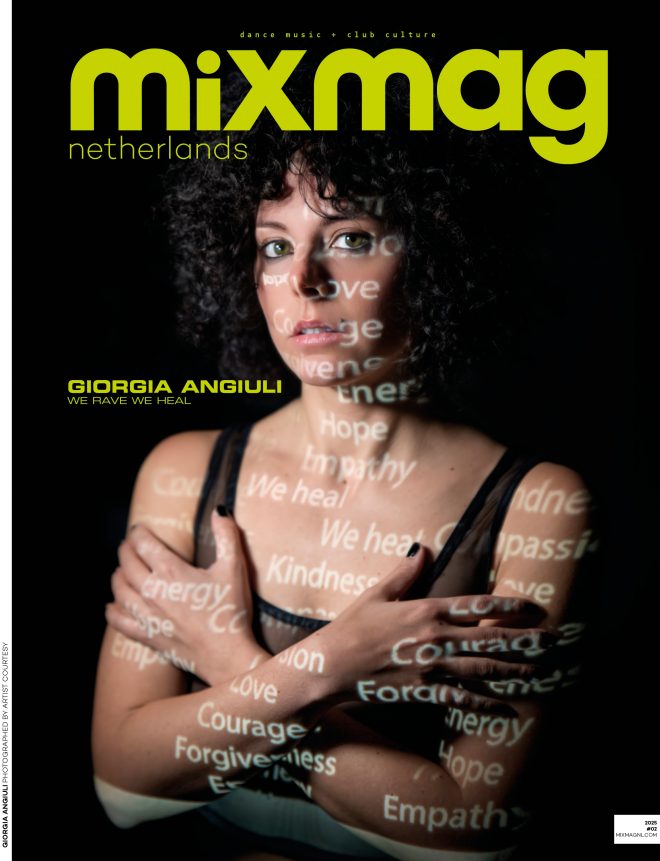
The first time I witnessed a Giorgia Angiuli performance, I didn’t just hear music—I felt it crawl beneath my skin, pulse through my nervous system, and settle in the cavity of my chest like a sentient echo. To call what she does "live electronic music" feels limiting, almost unjust. Angiuli doesn’t simply perform; she conducts rituals. Her sets are alchemical, swirling with analog instruments, digital machinery, a childlike ensemble of toys, and her spectral voice. The result is an experience that transcends the cerebral architecture of club culture. It becomes something else entirely—a shared emotional topography that flickers between joy, melancholy, and revelation.
This is no accident. Giorgia Angiuli is not your average producer nor your standard performer. Trained in classical guitar and steeped in academic musical discipline, she has undergone a radical metamorphosis over the past decade. Her work today defies easy categorization: it is as intimate as a diary and as expansive as a mantra. What unites her prolific output—from immersive albums to high-voltage EPs and globally praised live shows—is a relentless pursuit of emotional truth through sound.
When I connected with Angiuli for Mixmag NL’s April Digital Cover, I wanted to peel back the layers of this singular artist. What drives someone to evolve from the rigors of classical tradition into a prophetess of Healing Dance Music (HDM)? What unseen forces compel her to merge harder, faster rhythms with spiritual inquiry? How does a MIDI controller become an oracle, a theremin a therapist?
Throughout our dialogue, we traced her path from conservatory to cosmic communion, touching on themes as vast as trauma, euphoria, rebellion, neuroscience, and the technological soul. What emerged was a portrait not only of an artist at her most fearless, but of a woman deeply attuned to the frequencies that bind us.
This isn’t just an interview. It’s an initiation into a worldview where every beat is a breath, every synth a signal, and every performance a portal. Giorgia Angiuli is a cartographer of inner landscapes, and she’s inviting us all to dance our way back home.
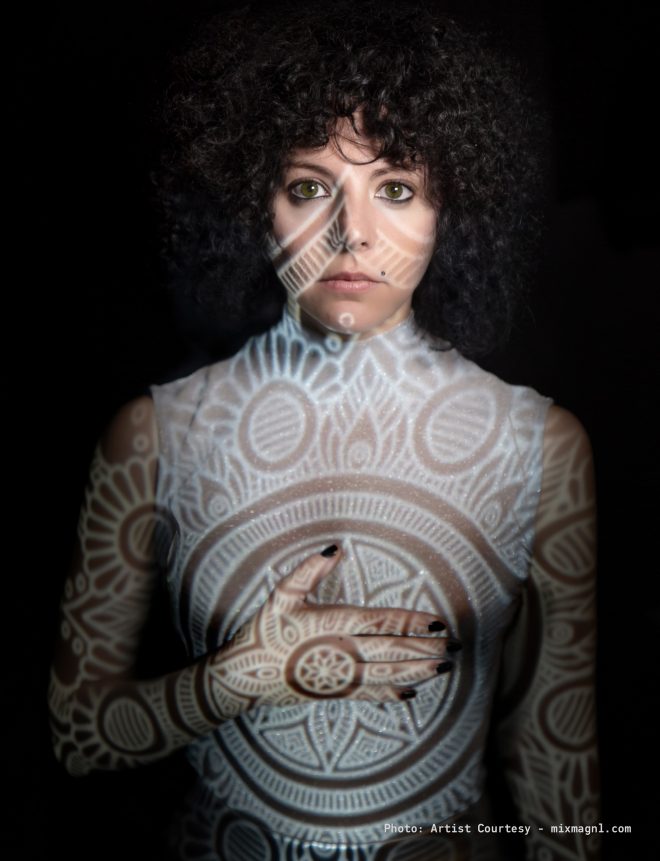
From Classical Roots to Sonic Healing
"My musical evolution has been a profound and transformative journey. Starting with classical roots (I studied classical guitar), I learned the importance of structure and discipline. However, over time, I felt the urge to break free from these conventions and explore expressive freedom and improvisation. This transition expanded my perception of music as a universal language capable of connecting people on a deep emotional level. I love all kinds of music and I play from classical to metal, electronic, etc."
In her own words, Angiuli positions herself as an explorer of sonic realms, unshackled by genre or tradition. This open-armed approach to sound would later crystallize in her project We Heal, a sonic sanctuary where performance becomes ritual.
During the COVID pandemic, I decided to delve into topics related to music and anxiety, which significantly impacted my transformation. This exploration deepened my understanding of how music can serve as a tool for emotional regulation and healing. I began to recognize the therapeutic power of sound, particularly during times of uncertainty and distress."
Angiuli doesn’t peddle escapism; she offers reclamation. In her hands, melody becomes medicine, and rhythm, a restorative rite.
Psychedelic Frequencies and Emotional Acceleration
"In this chapter of my life, I've embraced a notable shift toward faster tempos and intensified textures, gravitating toward genres like psytrance and hypertechno. This acceleration in rhythm unlocks a powerful spectrum of emotions within me—emotionally, somatically, and spiritually."
The transformation isn’t cosmetic; it’s metaphysical. Angiuli’s turn toward higher BPMs is less about trend and more about transcendence.
"Playing faster can be incredibly therapeutic, as it invites listeners to engage physically with the music... I like to refer to it as Healing Dance Music (HDM)... these intensified rhythms serve as a reminder of our resilience and the transformative power of music in navigating the challenges of our lives."
Her use of tempo as a therapeutic accelerant is both radical and resonant, turning the dancefloor into a kind of communal sweat lodge.

Dance as Neurological Alchemy
"In my vision of sound healing, I see dance as a form of neurological alchemy, where the body becomes a laboratory for transformation... I apply this understanding by focusing on the intentions behind each track."
Intent, for Angiuli, is everything. Tracks aren’t just engineered—they’re encoded.
"I believe that intentions are the most important aspect, even before the creative process begins... When I imagine each track, I see it as a kind of neural blueprint—an architecture of healing in motion."
The results? Sonic structures that don’t just hit your ears; they light up your neurons.
This is a rare and exquisite window into the mind of an artist who doesn’t merely compose or perform—she transfigures. Giorgia´s recounting of a journey from classical foundations to a boundaryless embrace of electronic sound is not the standard "genre shift" narrative. It’s a metamorphosis. What’s striking is the clarity with which she articulates the connective tissue between musical discipline and emotional intuition. She reveals a profound understanding of music as both a craft and a spiritual language, rooted in technical rigor but blooming into something deeply, almost mystically, human.
As the conversation shifts to faster tempos and heightened textures, Angiuli’s voice grows even more compelling. Her dive into psytrance and hypertechno isn’t some stylistic flirtation—it’s a full-bodied plunge into emotional velocity. She doesn’t ride the wave of BPM trends; she reimagines their purpose. By reframing acceleration as therapy, she challenges the dichotomy between cerebral and physical music. Her self-coined term “Healing Dance Music” isn’t a gimmick—it’s a provocation. It invites us to reconsider the club not as escapism, but as ceremony. And in a post-pandemic world grappling with disconnection and disembodiment, that reframe feels vital.
But perhaps the most compelling turn in this segment is Angiuli’s conception of dance as “neurological alchemy.” This is where her vision reaches its most potent articulation. Her emphasis on intentionality—on words as vibrational codes and music as architectural blueprints for healing—is both deeply poetic and scientifically aware. These aren’t just nice metaphors; they echo neuroscience, somatics, and ancient ritual all at once. Few artists speak with such integrated fluency about frequency, emotion, and physiology. Fewer still embody it. Angiuli does both, and the result is music that doesn’t just move you. It rewires you.
Warriors of Light: Music as Transformation, Connection, and Sacred Rebellion
The upcoming EP on ARTCORE Records is more than just a release—it’s a rite of passage. Converging raw energy with mystical exploration, it resonates powerfully with the aesthetic of Indira Paganotto, an artist she deeply admires.
“As a big fan of hers, I admire her as an innovator in the scene,” she says. The EP vibrates with both aggression and transcendence, as heard in one of its central tracks. “This EP captures a unique blend of rage and light. One of the tracks, titled ‘Warriors of Light,’ encapsulates this duality perfectly. It acknowledges that following the light can be challenging, and sometimes we need to act as warriors to overcome the darkness that surrounds us.”
Here, rebellion is less about destruction and more about metamorphosis—about shedding layers to step into something clearer, more whole.
This energy of transformation also pulses through her live performances. Known for their emotional immediacy and improvisational spirit, her shows fuse analog instruments, toys, theremin, and voice into something unpredictable and intimate. In an era often dominated by slick perfection, she stands in defense of the human element.
“In an era that often rewards mechanical perfection, I find that improvisation remains a sacred practice. I love playing live because it allows me to embrace the human touch and the gift of imperfection.” Her stage is more than a platform—it’s a spiritual zone.
“For me, the stage is a sacred space where chaos and order, play and precision come together in real time.”
She sees these moments of unpredictability not as flaws but as emotional catalysts.
“I find beauty in the imperfections that arise during a live performance. They remind us that we are all human, and our experiences are not always polished or predictable. These moments of unpredictability can lead to unexpected connections and emotional releases, enriching the experience for both me and the audience.”
There’s a reverence in her approach to live music—a commitment to presence and vulnerability that contrasts powerfully with the clinical polish of digital culture.
“In a world that often seeks perfection, celebrating these imperfections helps us embrace our shared humanity and the authenticity of our experiences.”
That ethos of connection reached an entirely new level during a visit to an orphanage in Mexico—a moment that left a deep mark on her.
“My visit to the orphanage in Mexico was indeed a magical experience, one that I attribute to my friend Jay, in art Agaphi Love. He is a very talented designer aligned with my mission of spreading light in our creative community.”
There, with no stage, no gear, and no audience in the traditional sense, music returned to its most basic and sacred form.
“During my time there, I played music for the children, and it was a deeply touching moment. In preparation for the visit, I invited my fans to bring gifts for the kids, and witnessing their generosity added an extra layer of warmth to the experience.” The absence of spectacle only heightened the authenticity.
“In a setting where the stage disappears, and there are no crowds, decks, or gear—only presence—the artist within me responds in a deeply authentic way. In those moments, music becomes a universal language, allowing us to connect on a human level.” The simplicity of the exchange—the music, the smiles, the shared silence—offered a glimpse into what truly matters.
“It’s about sharing feelings, stories, and love, rather than just delivering a performance.”
In the end, what she’s reaching for through every beat and breath is something profoundly human: resonance. Whether through an EP rooted in mystical rebellion, a live show sparked by imperfection, or a quiet moment in Mexico, she returns again and again to the same truth: music is connection. What makes her journey remarkable isn’t just the power of her sound, but the clarity of her intention: to use music not as a mask, but as a mirror. In her world, sound is light, and to dance is to awaken.
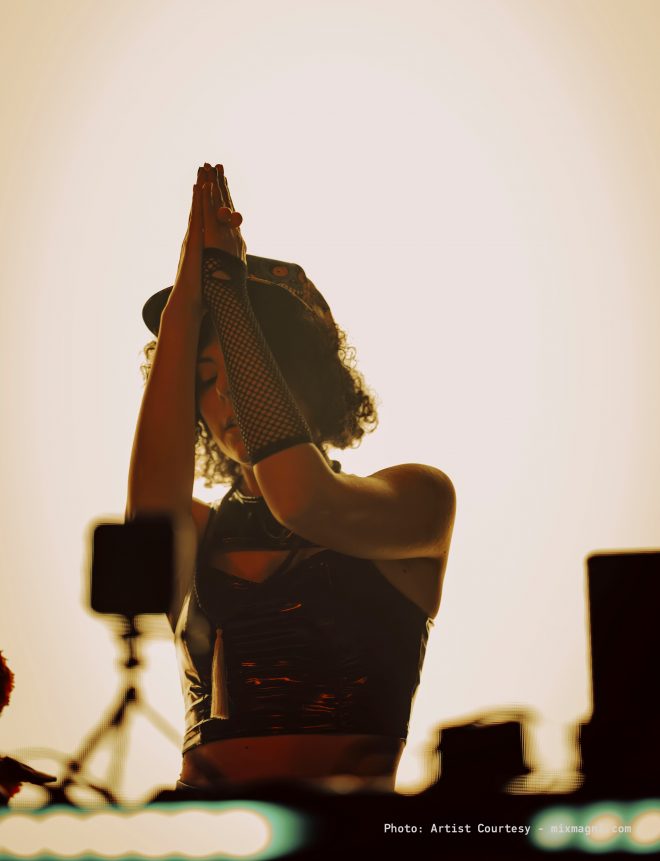
THE TECHNOLOGY OF FEELING: CAN MACHINES CARRY SOUL?
With her gear-heavy performances and collaborations with instrument-makers like Aodyo, Giorgia’s work pushes the boundary between analog and digital, emotion and technology. Her music is a living example of how machines can carry soul—if wielded with intention.
Throughout history, sound and rhythm have played vital roles in ritual, meditation, and transcendence. As I work with faster, entrancing BPMs, I see my music as participating in that lineage. There’s a deep connection between rhythm and the human experience, and I believe it can serve as a powerful tool for inducing altered states of consciousness.”
This awareness drives a creative process that’s as technical as it is emotional.
“I have composed with the specific intention to evoke different emotional responses—whether ecstatic, meditative, or cathartic. I’ve witnessed how certain beats and melodies can transport listeners, allowing them to connect with deeper parts of themselves. It’s a beautiful experience to see people lose themselves in the music, finding moments of clarity or release on the dancefloor.”
The relationship with her community plays a key role in that emotional exchange.
“My fans are so special, and I am incredibly grateful for all the beautiful messages they send me after my shows. Their feedback and support remind me of the community we are creating together—a space where we can share these profound experiences.”
Still, she acknowledges the tension between artistic depth and the pace of modern dancefloor culture.
“Balancing my intent with the demands of modern dancefloor culture can be a challenge. The energy of the dancefloor often calls for high energy and excitement, which can sometimes overshadow the more introspective aspects of music.”
“I strive to create tracks that not only get people moving but also invite them to explore their inner landscapes. By weaving together driving rhythms with layers of emotion and intention, I aim to create a space where the dancefloor becomes a portal for exploration and connection.”
Ultimately, the question of whether machines can carry a soul is answered not in theory, but in practice.
“I believe that music can be both a celebration and a journey, allowing listeners to experience the best of both worlds—joyful movement and profound introspection. Through this balance, I hope to honor the rich history of sound while contributing to the evolving narrative of modern music, all while fostering the beautiful community we are building together.”
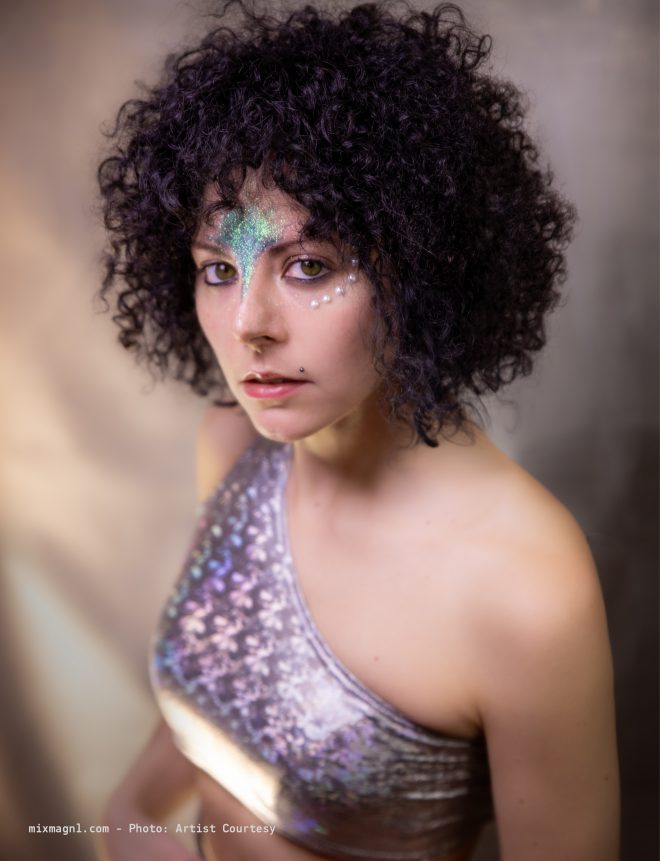
GIORGIA TODAY: WHAT DOES IT TRULY MEAN TO BE IN HARMONY WITH ONESELF, ARTISTICALLY, SPIRITUALLY, AND ENERGETICALLY?
At this point in her journey—with We Heal, the ARTCORE release, and her fearless dive into new sonic frontiers—Giorgia Angiuli isn't just evolving artistically; she’s arriving. Not at a destination, but at a state of alignment. The version of Giorgia we see now doesn’t exist apart from the woman behind the machines and melodies—it is her, fully integrated.
“There’s a beautiful blend of artistic expression, spiritual awareness, and a sense of harmony,” she says.
This moment, she explains, feels more profound than anything before. And it shows. Gone are the days of chasing external markers of success. What remains is clarity of purpose, of process, of presence.
This transformation hasn’t happened in a vacuum. It is the result of both rooted stillness and wide movement. A dance between inner listening and outer exploration. Between the silence of meditation and the energy of global stages.
“I’ve taken the time to reflect, meditate, and truly listen to what resonates,” she shares; an act of peeling back, rather than building up.
And yet, it’s the world outside—its rhythms, cultures, and communities—that continues to feed this journey. Travel, connection, the electricity of human interaction—all of it has carved new shapes in her sound and spirit. The result is not control, but surrender. Not mastery, but trust. A recognition that she is part of something larger, something vibrational.
“Healing through music is not just an idea,” Giorgia affirms. “It’s a lived practice.” In her hands, music becomes a conduit for transformation, for communion, for catharsis. It’s not performance; it’s offering. And through that offering, she hopes to mirror something back to those who listen.
Because in the end, it’s not just about songs or sets. It’s about frequencies that can reach places words can’t. Giorgia’s sound isn’t just heard—it’s felt. A vibration that invites movement, stillness, and everything in between. A space where healing isn't a concept, but a current, shared, embodied, and real.
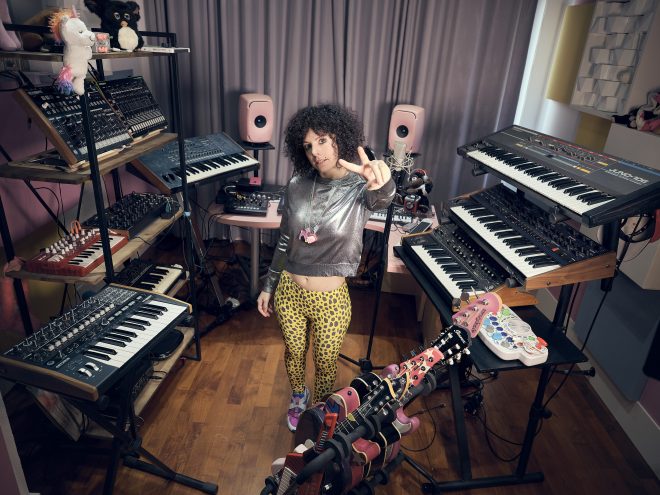
MY THOUGHTS
To witness Giorgia Angiuli in motion is to realize that we’re not just listening to a musician; we’re communing with a conduit. In a world increasingly mediated by screens, algorithms, and synthetic experiences, Angiuli reminds us that technology need not sever our emotional cores—it can, in the right hands, deepen our empathy, heighten our consciousness, and help us feel more, not less.
Giorgia Angiuli’s trajectory as an artist is one of rare coherence: few musicians manage to align their musical evolution so closely with their inner transformation.
What defines her today is not her technical prowess or her innovative live setup—it’s the clarity of her artistic philosophy. She is not playing at authenticity; she is living it. And in a genre often enamored with surface and spectacle, this feels quietly revolutionary.
It's remarkable how her setup, which could easily drift into the overly cerebral or performative, remains anchored in feeling. Her choices feel intentional, not ornamental. She is not hiding behind the gear; she is opening herself through it.
As I write these lines, I can´t help but hear a voice that emerges both clear and composed, but also gently radical. Angiuli speaks of rhythm as medicine, of music as a lived practice of healing. These are big ideas, but she approaches them with humility. There’s no preaching, no overreach—just the steady articulation of someone who has done the work. Her reflections are grounded: the surrender she describes is not passive, but alert. The inner stillness she names is hard-won, not romanticized. And her sense of community—of building a shared emotional space on the dancefloor—is both idealistic and tangible. It's easy to believe her because you can hear it in the music.
There’s also a rare emotional intelligence in how she discusses the tension between the ecstatic and the introspective. Many artists attempt to navigate this spectrum, but few do so with her level of nuance. Angiuli acknowledges the pressure to deliver energy while protecting the more fragile aspects of sound. Her approach is not about choosing one over the other, but about layering them; creating tracks that pulse with urgency while leaving room for reflection. This balance is delicate and, in her hands, deeply effective.
Ultimately, Giorgia Angiuli is not simply crafting tracks; she is cultivating states of consciousness. Her current chapter, as reflected in We Heal and her contributions to ARTCORE, feels like a maturation, not an endpoint, but a refinement of intention. She is an artist who listens deeply to herself, her machines, and her audience. And in doing so, she offers something rare: a sound that doesn’t just fill a space, but transforms it.
She is both shaman and scientist, architect and anarchist. Her tempos may rise, her frequencies may swirl into psychedelic chaos, but her grounding is unwavering. She leads with heart, guided by the belief that music is not just a commodity or a career, but a calling.
What gives her vision its edge is not just her technical prowess, but her emotional intelligence. In an industry that often celebrates the polished over the profound, Angiuli dares to be messy, intuitive, and raw. Her imperfections become the very proof of her power. And perhaps that is her most radical act: to be fully, unapologetically human in a field obsessed with perfection.
As we navigate a world in flux, with its political noise, emotional fatigue, and digital alienation, artists like Giorgia Angiuli become more than musicians. They become lighthouses. Her message is clear: the dancefloor can be a church, the synth a sanctuary, and the beat a heartbeat. All you have to do is listen.
And when you do, don’t be surprised if you come away not just entertained, but transformed.


